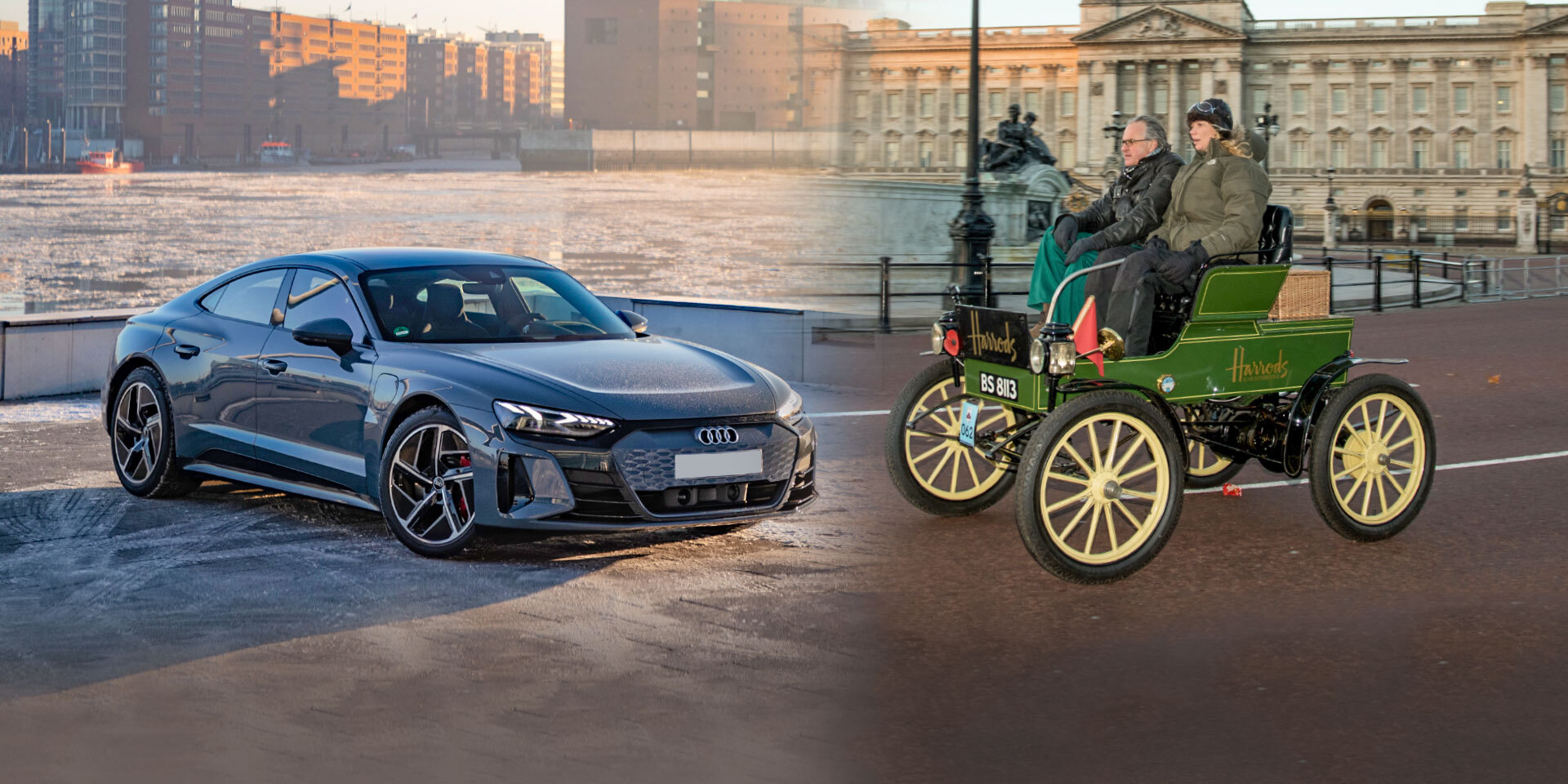Electric cars have increased in number and popularity in recent years, but their importance goes far beyond that. In fact, today’s electric cars like the Tesla Model 3 and VW ID4 can find their earliest ancestors at the dawn of the auto industry.
Depending on who you ask, electricity actually precedes some of the earliest internal combustion engine production cars.
As early as 1884, the English inventor Thomas Parker was building prototype versions for a fully electric street car of his own design – about a year before Karl Benz completed work on his gasoline-powered patent motor vehicle.

Much more all-electric cars would hit the market in the years to come – from more compact offerings like the horseless two-seater flake electric car of 1888 to the fleets of electric taxis that began collecting fare in New York in the 1890s. Even Harrods department store saw potential for electric vehicles, as it used cars like this one by Pope Waverley in 1901 for light delivery tasks in London.
A particularly interesting electric vehicle from this period was the Egger-Lohner C2 Phaeton from 1898, which was the first vehicle designed by Ferdinand Porsche – more than 120 years before the company that bears his name launched its first electric car, the Porsche Taycan, brought to market.

While the electric cars from this era were very crude and rudimentary by today’s standards, some of the pluses of these early models have carried over to the 21st century. Compared to the gasoline and steam powered cars that existed at the same time, electric cars were generally easier to drive and maintain, and it was attractive that they didn’t make any noise or emissions.
It also helped that it was a lot easier to start an electric car. Back then, the only way to get a gasoline engine running was by using a starter handle. It could take a few minutes for enough pressure to build up in the boiler of a steam truck so that it could drive on its own.

However, the tide would soon turn against the electric car. Innovations such as electric starter technology helped improve the usability of gasoline vehicles, and the pioneering work in mass production of car factories played a critical role in making gasoline vehicles affordable. Take into account the improvement in gas station infrastructure, and it may come as no surprise that electric street cars were all but extinct by the 1930s.
It wasn’t until the 1960s and 1970s that electric cars reappeared in response to growing concerns about pollution, air quality and rising fuel prices. The origins of some of today’s electric cars can also be found around this time – the Renault Zoe Supermini can trace its spiritual roots back to the humble Renault 5 Electrique from 1972, and the family tree of the VW ID3 began almost 50 years ago with the 1976 Volkswagen Elektro-Golf.

A number of electric vehicles have hit the streets in recent years – particularly across the pond, where cars like the pioneering General Motors EV1 gave American drivers a taste of what was to come in the 1990s. However, it was in the 2010s that electric cars became mainstream here in the UK.
Cars like the Nissan Leaf and the whimsical Mitsubishi i-MiEV from 2010 were proof that it was possible to make a workable electric hatchback – and later the Tesla Model S, with its claimed range of more than 242 miles than it Our coastlines in 2014 showed that they can also travel considerable distances between cargoes.

In the past decade since these cars hit the market, a combination of factors such as increasingly stringent emissions regulations and improving battery technology affordability have paved the way for the electric vehicle resurgence we see today. It has also helped spawn a variety of new electric cars – from kinky city cars like the Seat Mii Electric and more family-friendly options like the Ford Mustang Mach-e to incredibly fast performance cars modeled on the Audi e-tron GT.
Electric cars have had many ups and downs in their long and storied history.
Given that more new battery-powered cars are for sale every year and a growing number of automakers are pledging to go all-electric in the not-too-distant future, they seem very much here to stay this time around.
Ready to buy your next car?
Carwow average saving £ 2,900
Ready to buy your next car?
Choose a car

